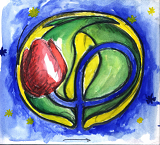25 #include <tulip/tulipconf.h>
26 #include <tulip/Coord.h>
27 #include <tulip/Color.h>
28 #include <tulip/GlSimpleEntity.h>
41 class TLP_GL_SCOPE GlPolyQuad :
public GlSimpleEntity {
53 GlPolyQuad(
const std::string &textureName =
"",
const bool outlined =
false,
const int outlineWidth = 1,
const Color &outlineColor = Color(0,0,0));
74 GlPolyQuad(
const std::vector<Coord> &polyQuadEdges,
const std::vector<Color> &polyQuadEdgesColor,
const std::string &textureName =
"",
75 const bool outlined =
false,
const int outlineWidth = 1,
const Color &outlineColor = Color(0,0,0));
84 GlPolyQuad(
const std::vector<Coord> &polyQuadEdges,
const Color &polyQuadColor,
const std::string &textureName =
"",
85 const bool outlined =
false,
const int outlineWidth = 1,
const Color &outlineColor = Color(0,0,0));
95 void addQuadEdge(
const Coord &edgeStart,
const Coord &edgeEnd,
const Color &edgeColor);
100 void draw(
float lod,Camera *camera);
105 void setColor(
const Color &color);
110 void setOutlineColor(
const Color &color) {
111 outlineColor = color;
117 void setOutlined(
const bool outline) {
124 void setOutlineWidth(
const int width) {
125 outlineWidth = width;
131 void translate(
const Coord &move);
136 void getXML(std::string &outString);
141 void setWithXML(
const std::string &inString,
unsigned int ¤tPosition);
144 std::vector<Coord> polyQuadEdges;
145 std::vector<Color> polyQuadEdgesColors;
146 std::string textureName;

